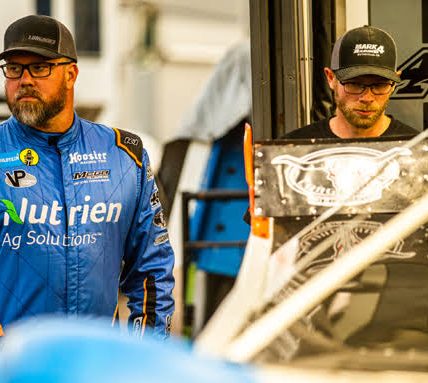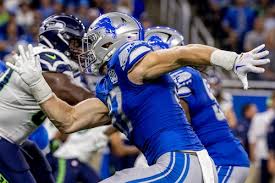**Gabriel Landeskog to Miss 2025-26 Colorado Avalanche Season: Implications and Outlook**
The Colorado Avalanche face a significant challenge ahead as team captain Gabriel Landeskog is set to miss the entirety of the 2025-26 NHL season. This development marks a pivotal moment for the franchise, impacting team dynamics, leadership, and prospects for the upcoming campaign. Understanding the context, reasons behind Landeskog’s absence, and the potential consequences offers insight into how the Avalanche might navigate this adversity.
**Background on Gabriel Landeskog**
Gabriel Landeskog, a Swedish winger, has been a cornerstone for the Avalanche since being drafted 2nd overall in the 2011 NHL Entry Draft. As team captain since 2012, Landeskog has exemplified leadership, grit, and offensive prowess, serving as a vital figure both on and off the ice. His physical style of play, combined with his ability to elevate his teammates, has contributed significantly to Colorado’s success, including their Stanley Cup victory in 2022.

Throughout his career, Landeskog has been known for his durability and consistency, making his upcoming absence even more impactful. As he approaches his early thirties, questions about his health and future have become more prominent, especially in light of recent injury setbacks.
**Reasons Behind Landeskog’s Absence**
While specific details about Landeskog’s injury or health issues leading to his absence may not be fully disclosed, reports suggest that the player is dealing with a significant injury or health concern that will keep him sidelined for the entire 2025-26 season. Such injuries could include knee or ankle issues, which are common among physically demanding NHL players, or more severe concerns such as lingering post-surgical recovery or chronic conditions.
In recent years, Landeskog has faced injuries that have limited his playtime, including knee surgeries following previous seasons. The decision for a full-season absence might stem from a need for extended rehabilitation, ensuring he is fully healthy before returning to the ice. It’s also possible that the injury is of such severity that rushing back could risk further damage or compromise his long-term health.
**Implications for the Colorado Avalanche**
The absence of Landeskog for an entire season is a significant blow to the Avalanche. As captain, he provides leadership, motivation, and stability—a calming force on the ice during high-pressure moments. His absence leaves a leadership void that must be filled by other veterans and emerging leaders within the locker room.
Offensively, Landeskog’s scoring, physicality, and ability to drive play are difficult to replace. The team will likely need to rely more heavily on their top scorers, such as Nathan MacKinnon and Mikko Rantanen, to shoulder the offensive load. The depth of their roster and the development of younger players will be critical in filling the void.
Defensively, Landeskog’s presence on the ice and his physical style help in puck battles and defensive zone coverage. The team’s coaching staff will need to adjust their strategies to compensate for his absence, perhaps emphasizing a more collective defensive effort.
From a psychological standpoint, the team’s morale might be affected. Leaders like Landeskog serve as emotional anchors, especially during tough stretches of the season. His absence could test the team’s resilience and cohesion, but it also offers an opportunity for other players to step into leadership roles and demonstrate their character.
**Strategic Adjustments and Team Outlook**
The Avalanche’s management and coaching staff will need to craft a strategic plan to mitigate the impact of Landeskog’s absence. This may involve:
– **Lineup Adjustments:** Shuffling lines to maximize offensive production from other forwards and injecting younger players into roles they can develop in.
– **Defensive Schemes:** Implementing more structured defensive strategies to compensate for leadership gaps and physical presence.
– **Leadership Development:** Empowering alternate captains and veteran players like Erik Johnson or Josh Manson to step into greater leadership roles.
– **Trade and Acquisition Options:** Although challenging mid-season, management might explore trade opportunities or free-agent signings to bolster depth and leadership.
The team’s depth and organizational culture will be tested. If the Avalanche can adapt effectively, they could still remain competitive in the Western Conference. However, their window for contending for the Stanley Cup might be slightly narrowed, especially if injuries or underperformance elsewhere in the roster occur.
**Future Outlook and Long-Term Considerations**
Looking beyond the 2025-26 season, Landeskog’s health becomes a critical factor for the Avalanche’s future. If he is able to recover fully and return to his previous level, his leadership and skill set will still be invaluable. Conversely, if health issues persist, the franchise may need to consider long-term adjustments, including potential leadership transitions or reshaping their roster.
The situation underscores the importance of depth, resilience, and adaptability in professional sports. While losing a player of Landeskog’s caliber is a setback, it also provides an opportunity for other players to step up and for the organization to demonstrate its capacity for overcoming adversity.
**Conclusion**
Gabriel Landeskog’s absence during the 2025-26 season is a significant event for the Colorado Avalanche, affecting team chemistry, leadership, and on-ice performance. While the challenge is formidable, it also offers a chance for other players to emerge and for the team to demonstrate resilience. The Avalanche’s ability to adapt, develop younger talent, and maintain their competitive edge will determine how well they navigate this difficult period. Ultimately, Landeskog’s health and future contributions remain a key focus for the franchise moving forward, and their response during this season will shape their trajectory in the years to come.




